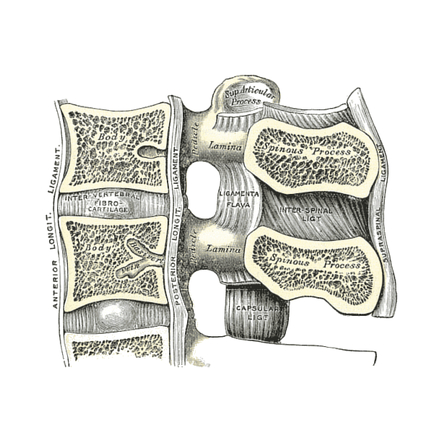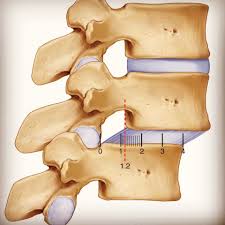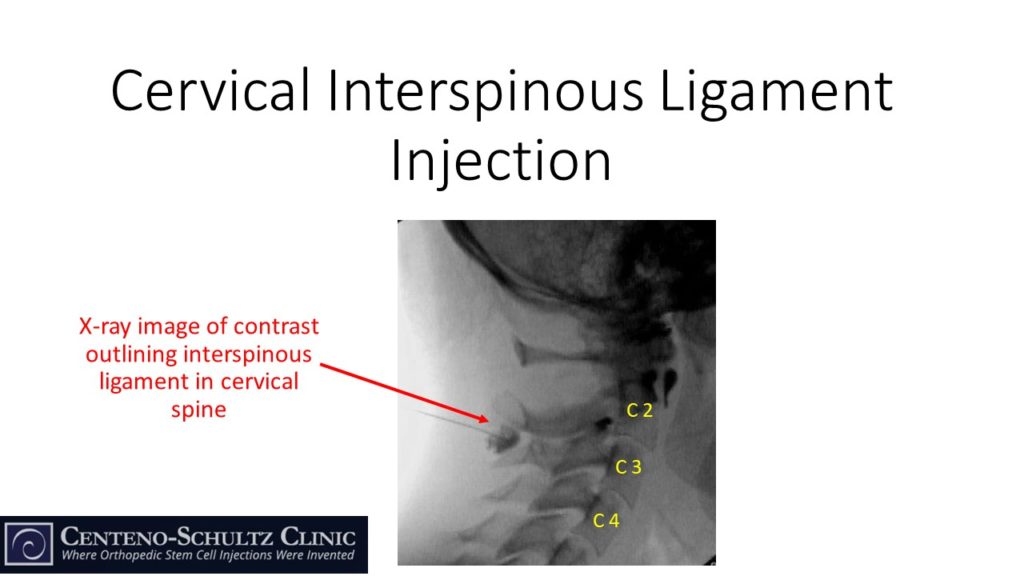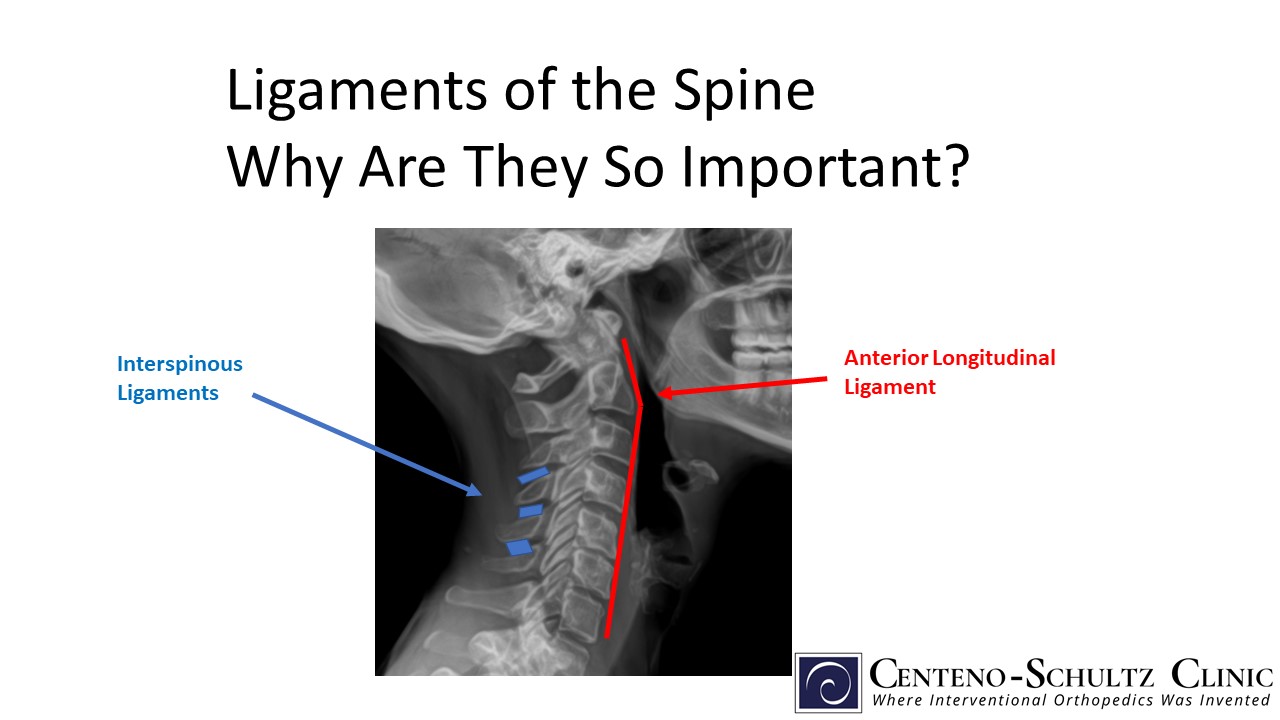It started as a dull ache and now has progressed. It feels like a knife in the back of your neck and is preventing you from daily activities. Medications, rest, and conservative treatments have failed. Your doctor noticed on X-ray that the bones are out of alignment. They think you may have suffered a ligament injury.
What is a ligament? What is the function of ligaments in the spine? What are the five main ligaments of the spine? Are there different types of ligament injuries? What can happen if spinal ligaments are injured? Can ligaments heal on their own? What are the treatment options for ligaments of the spine injuries? Let’s dig in.
Overview Of The Spinal Column
The spinal column, also known as the vertebral column, is a complex structure composed of 33 vertebrae, segmented into five distinct regions. These regions each have unique characteristics and functions, providing both structural support and flexibility to the human body.
Cervical
The cervical region consists of the first seven vertebrae, labeled C1 through C7. This uppermost section of the spine supports the head and allows for a wide range of motion, including nodding and rotating. The C1 vertebra, known as the atlas, and the C2 vertebra, known as the axis, play crucial roles in the rotation of the head.
Thoracic
The thoracic region contains 12 vertebrae, labeled T1 through T12. These vertebrae are connected to the ribs, forming part of the ribcage, which protects vital organs like the heart and lungs. The thoracic spine is less mobile compared to the cervical and lumbar regions, providing stability and structural support.
Lumbar
The lumbar region, consisting of five vertebrae labeled L1 through L5, is situated below the thoracic vertebrae. This section bears much of the body’s weight and is characterized by its larger, more robust vertebrae. The lumbar spine is known for its flexibility and range of motion, facilitating movements such as bending and twisting.
Sacral
The sacral region is composed of five fused vertebrae, known as the sacrum. These bones are located below the lumbar spine and connect the spine to the pelvis. The sacrum plays a critical role in supporting the weight of the upper body when standing and walking.
Coccygeal
At the very base of the spinal column is the coccygeal region, which includes four small, fused vertebrae known collectively as the coccyx or tailbone. The coccyx serves as an attachment site for various ligaments, tendons, and muscles and assists in supporting a person’s weight when sitting.
Types Of Spinal Ligaments, Their Roles, And Importance
A ligament is a thick piece of connective tissue that connects bone to bone. Think of it as duct tape that holds bones together.
Ligaments function to stabilize the spine, hold the vertebral bodies together, limit spinal motion, and protect the discs (1).
A review of basic spinal anatomy will help you better appreciate the major ligaments of the spine and their location. In this post, I will be discussing the cervical spine: aka the neck. All the ligaments discussed below are in the cervical spine but actually run the length of the spine into the sacrum.
The spine is composed of bony building blocks that stack one upon another. These are called vertebral bodies. In the cervical spine, there are seven bony building blocks, numbered from 1 to 7.
They are preceded by the letter “C” which refers to “cervical”. Sandwiched between each of the building blocks is a spongy shock absorber called a disc. At each level of the spine, nerves exit through a bony doorway called the neuroforamen.
The spine contains an array of ligaments, both large and small, that play a crucial role in its structure and function. The five main ligaments of the spine are as follows:
Anterior Longitudinal Ligament (ALL)
The ALL is a thin, one-inch wide ligament, located on the front of the spine. It starts at the base of the skull and extends into the pelvis.
Posterior Longitudinal Ligament (PLL)
The PLL is a thin, one-inch wide ligament, located on the backside of the bony building blocks of the spine (vertebral bodies). Like the ALL, the PLL starts at the base of the skull and extends into the pelvis.

Supraspinous Ligament
On the backside of the spine is a projecting bone that is easily felt. It is present at each level and is located in the midline. If you run your hand down someone’s neck, these pointed bones are easily identified. These are the spinous processes. The supraspinous ligament connects each of the spinous processes from C7 down to L4.
Interspinous Ligament
The interspinous ligament, similar to the supraspinous ligament, connects the spinous processes of the spine. It is positioned slightly deeper than the supraspinous ligament. Its superficial fibers connect with the supraspinous ligament, while the deeper fibers connect with the ligamentum flavum.
Essentially, it is situated between the supraspinous ligament and the ligamentum flavum.
Ligamentum Flavum
The ligamentum flavum is a thick ligament that connects the spinal bodies. Specifically, it connects the lamina to adjacent vertebral bodies. It is sandwiched between the interspinous ligament and the dura. It starts in the C2 bone and extends down into the pelvis.
It is an important landmark for anesthesiologists when advancing their needles for epidural injections. The ligamentum flavum is thick and there can be significant change in the needle pressure when advancing into the ligamentum flavum. The technique is called loss of resistance (LOR).
The ligamentum flavum can increase in thickness, causing narrowing of the spinal canal, a condition known as spinal stenosis.
Can You Tear Or Injure Spine Ligaments?
Ligaments in the spine are susceptible to injury. Motor vehicle accidents, sports injuries, other traumatic events, and repetitive motion over time are the most frequent causes of ligament injury (2).
Various types of trauma, including motor vehicle accidents, can cause ligament injury. These injuries are classified into three grades, as follows:
- Grade 1 sprain: A mild sprain that includes slight stretching of the fibers and partial tear of the ligament.
- Grade 2 sprain: A more severe sprain that involves a full-thickness partial tear but the ligament is still intact.
- Grade 3 sprain: The most severe sprain, involving the entire ligament. The two edges of the ligament are pulled apart. This is otherwise known as a rupture.
What Could Happen If The Ligaments In Your Spine Are Injured?
Spinal ligaments provide important stability, limit motion, and protect the spinal discs. Injury to spinal ligaments is graded according to the severity of the ligament injury. Injury to spinal ligaments can cause any of the following:
Spinal Instability
The spinal bones stack one upon another and are supported by spinal ligaments. Injury to these ligaments can cause one or more of the vertebral bodies (bony building blocks) to move. This is referred to as listhesis. If the bone is moved forward in relation to the adjacent bone, it is called anterolisthesis. Conversely, if the bone is moved backward in relation to the adjacent bone, it is called retrolisthesis.

Slippage of vertebral body backwards in relation to the other spinal bones: retrolisthesis
Disc Injury
Movement of the vertebral bodies creates a shearing force on the disc. This force can lead to disc irritation, injury, and degeneration. In addition, the loss of support provided by the ligament can cause disc protrusions or herniations.
Nerve Injury
Movement of one or more vertebral bodies can also irritate exiting nerve roots, causing radiating extremity pain, numbness, and tingling.
Spinal Stenosis
Movement of one or more vertebral bodies can narrow the spinal canal.
Facet Injury
Ligament instability in the spine can lead to facet overload, irritation, and injury, which in turn can result in debilitating pain.
Treatment Options For Spine Ligament Injury
Treating spinal ligament injuries involves a range of options tailored to the type and severity of the injury. Here are some common treatment strategies:
Conservative Treatment Options
Conservative treatment options often serve as the first line of defense against spine ligament injuries. Rest is paramount in the initial stages to prevent further strain on the injured ligaments. Activity modification is equally crucial; this involves avoiding actions that exacerbate pain or discomfort and incorporating low-impact activities that do not stress the spine.
For instance, if heavy lifting is part of one’s exercise routine, substituting it with light exercises that maintain mobility while safeguarding the spine can be beneficial.
Bracing is another conservative treatment that can offer significant benefits. A well-fitted spinal brace supports the back, reduces movement in the injured area, and alleviates pain.
Physical therapy is also highly recommended. Guided by a professional therapist, patients engage in tailored exercises designed to strengthen spinal muscles, enhance flexibility, and restore normal function.
This multimodal approach ensures that the spine is progressively conditioned to bear regular loads, facilitating recovery while minimizing the risk of re-injury.
Pain Management
Pain management for spine ligament injuries can be effectively achieved through various methods, each targeting pain relief and inflammation reduction.
Heat and cold therapy are simple yet powerful tools; applying cold packs can help numb acute pain and decrease swelling, while heat packs can relax tight muscles and increase blood flow to the injured area, promoting healing.
Medications also play a crucial role in managing pain. Over-the-counter options like nonsteroidal anti-inflammatory drugs (NSAIDs) help reduce inflammation and provide pain relief, while prescription medications may be necessary for more severe pain. It is worth mentioning that NSAIDs pose significant side effects, especially if taken in high doses.
In some cases, doctors may recommend steroid injections, which deliver powerful anti-inflammatory medication directly into the affected area. These injections can reduce inflammation and provide significant pain relief, often allowing patients to engage more effectively in physical therapy and other rehabilitation activities. However, similar to NSAIDs, steroid injections also present significant side effects.
Surgical Treatment
Surgery may be considered for severe ligament injuries or instability, but it is typically a last resort after exhausting conservative measures. When non-surgical treatments such as physical therapy, bracing, and pain management do not provide relief and the patient continues to experience debilitating pain or instability that affects their quality of life, surgical options may be explored. The goal of surgery is to restore stability, relieve pain, and improve function.
While surgery can offer significant benefits, it is essential to weigh the potential risks and recovery time. Patients are advised to have thorough discussions with their healthcare providers to understand the implications and make informed decisions. Rehabilitation following surgery is critical to ensure a successful outcome, incorporating physical therapy to regain strength, flexibility, and function in the months following the procedure.
The Centeno-Schultz Way Of Treating Spinal Ligament Injuries
At the Centeno-Schultz Clinic, treatment of spinal ligaments is a central portion of our philosophy and treatment protocol. We view the spine as a collection of many parts working in a synchronized fashion. This approach is known as the functional spinal unit (FSU) and is radically different from the approach used in most pain clinics, which focus on one or more “pain generators.”
Spinal ligament injuries can be treated by precise injections of PRP or bone marrow concentrate under X-ray or ultrasound guidance. Blind injections are below our standard of care and place the patient at risk for nerve, disc, and vascular injuries. The injections are demanding and cannot be performed by your orthopedic surgeon or family physician.
Below is an x-ray image of a cervical interspinous ligament injection from my clinic. It was performed under X-ray guidance in a patient with cervical instability.

Healing of ligaments following PRP or bone marrow concentrate injections takes time. There are three distinct phases: inflammatory, proliferative, and tissue remodeling. To learn more about ligament healing click on the video below.
Find The Support Your Spine Deserves – Start With Healthy Ligaments
Spine ligament injuries demand a multifaceted approach to treatment to achieve optimal recovery. From conservative treatments like physical therapy and bracing to more advanced methods such as PRP or bone marrow concentrate injections, each step is crucial in ensuring the restoration of stability, alleviation of pain, and enhancement of function.
At the Centeno-Schultz Clinic, our commitment to precise, guided treatments and the understanding of the spine as a functional unit set us apart in our approach. We aim to provide our patients with the best possible outcomes through evidence-based practices and individualized care plans. By prioritizing the health of your spinal ligaments, you pave the way for a strong, resilient spine that can support an active and fulfilling life.
Get the best treatment for your spinal ligament injury today. Learn what your regenerative options are.





